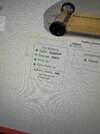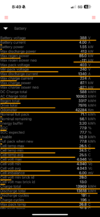Is the outdoor temperature warming up? Fluctuations like that are usually temperature related.
No, thats a myth.
Some third part apps seem to use data that is influenced by temperature.
The BMS data is not. The Nominal Full Pack number is not in general affected by temperature.
This change is quite high and must mean the BMS either was of before and adjusted back now, or the other way around.
It would be possible to calculate the approximate capacity from average SOC and sverag temperature.
A quick calculation says that in a warm climate like AUS the battery would have 6% calendar aging the first year if charged to 80% and not driven down below 55-60% each day.
If the car is about four years, we are looking at square root (4) x 6 = 12% calendar aging.
Cyclic aging is probably not that much so around 12% in total.
77.8 kWh x 0.88 = 68.5 kWh capacity today.
(The precise “hit” of the earlier NFP is a coincidence, I just grabbed a number for car age that seemed probable).
I could do a more precise calc with my excel formulas, taking more data into account.
For this I need:
-How many km/miles on the ODO
-Car age, manufacturing date or delivery date
-Daily charge, and end of day SOC (before next charge)
- When the charge is done each day (at arrival after work, like 6pm or middle of the night or in the morning)
- average annual temp, or city/country for me to find out.
-Is the car parke in a garage?
-Garage: temp ? ( insulated or not).




